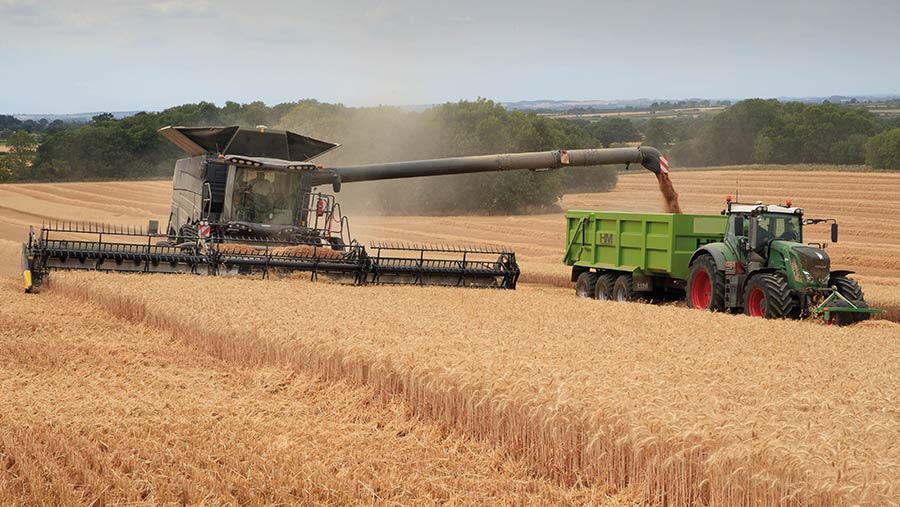7 trends that will affect farming in 2023
 © Tim Scrivener
© Tim Scrivener After a tumultuous 12 months in farming, 2023 does not look like it will provide a significant turnaround in prospects for UK farm businesses.
Many economists predict the economic downturn is expected to continue next year and 2023 could be a slower year for growth than 2022.
The shifting sands of agricultural policy, further impacts of climate change and soaring input prices are all likely to be key influences within the rural economy, according to land agent Strutt & Parker.
See also: Defra slurry grants: What’s on offer and who can apply?
But despite the ongoing challenges of the recession, new and exciting opportunities are emerging, according to Rhodri Thomas, head of rural policy at Strutt & Parker.
“Land managers would be wise to be proactively thinking about their options to identify where the best opportunities might lie,” he advised.
Now is a good time for farmers and land managers to start gathering information and data to help them work out the best ways to respond to the challenges they will face in 2023.
The land agent has compiled seven key trends that farmers and landowners should watch for in the coming 12 months to give their businesses the best chance of success during what is likely to be a difficult period.
1. Higher working capital requirements
Harvest 2022 is likely to have been a profitable year for those arable growers who purchased the bulk of their inputs before the massive increases in input costs and benefited from buoyant grain prices.
But input costs for harvest 2023 will be significantly higher and commodity prices have also eased back from the highs seen earlier in the year.
Higher working capital requirements for harvest 2023 will put a squeeze on profitability and have a big impact on cashflow.
Farmers should assess if they are likely to have sufficient working capital and consider benchmarking and budgeting.
2. Mitigating the energy crisis
The energy crisis is opening significant opportunities for landowners in the delivery of both large- and small-scale renewable energy schemes.
Developers of large-scale solar projects are prepared to pay rents of about £1,000/acre (index linked) along with a percentage of turnover.
Battery storage site rents are typically between £2,000/MW and £2,500/MW. Roof-mounted solar PV schemes can help farmers and landowners cut their electricity bills by reducing the amount of energy they buy in.
Farmers who already have a solar array, but do not have an export meter fitted, could consider getting one installed amid some excellent rates being paid for exported electricity.
3. Nature recovery
Environmental groups are pushing policymakers to recognise nature recovery is just as important as reducing greenhouse gas emissions. Looking ahead, active habitat management will become more important.
Research has shown wildlife habitats can have a positive effect on crop production; farm profits can increase even if the area cropped is reduced.
As ever, the challenge remains securing appropriate funding – from both the public and private sector.
4. Rise in bad debt
Official government figures show rising levels of business insolvencies, so it has never been more important to know your customers and manage the risk of bad debts closely.
Monitor any changes in business practices that might signal buyers are suffering cashflow problems.
State terms of business clearly on invoices and set up reminders so you know when you need to start chasing payments.
5. Let property management challenges
Anyone with a property portfolio will also need to be particularly mindful about its impact on tenants.
It is likely there will be commercial and residential tenants who may find themselves struggling to meet their rent in the cost-of-living crisis.
Landlords are also facing the prospect of major legislative changes associated with improving energy efficiency and ensuring a fairer deal for tenants.
6. Grants
Take advantage of grant support to future-proof your business where it is available.
For example, farmers in England have until 31 January to apply for grants of up to £250,000 to replace, build or expand existing slurry stores so that they have six months’ storage capacity.
A new Rural England Prosperity Fund is also on its way, which could be useful for farmers looking to diversify.
In Scotland, there is funding available for carbon audits and soil testing under the Preparing for Sustainable Farming National Test Programme.
7. Greater volatility
The effects of climate change are becoming clearer every day; heatwaves, flooding and disease risks seem to be increasing for the arable, livestock and forestry sectors.
The forestry sector is seeing the European spruce bark beetle and the oak processionary moth spread in south-east England. Woodland owners are advised to actively monitor their woodlands and plan ahead.
